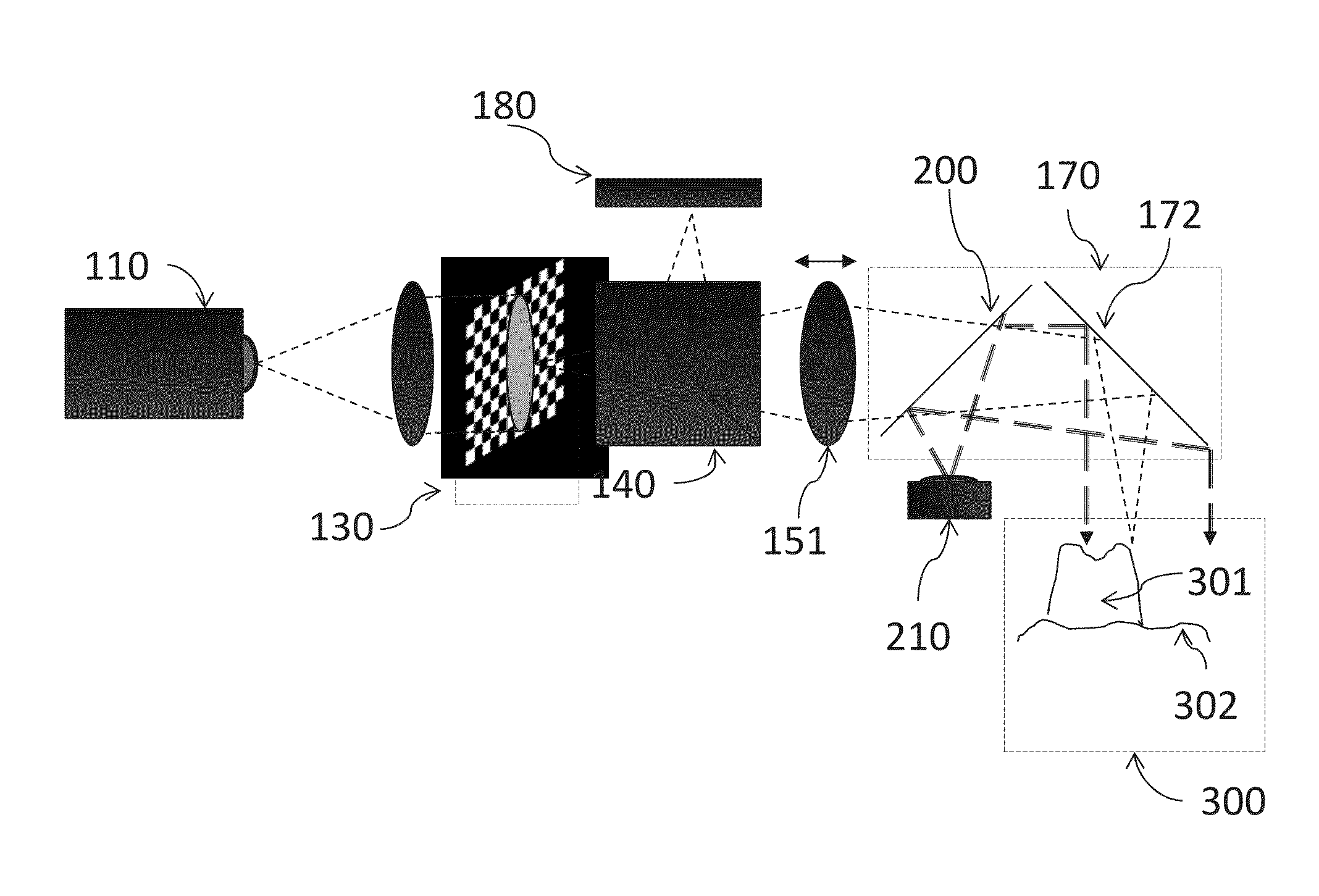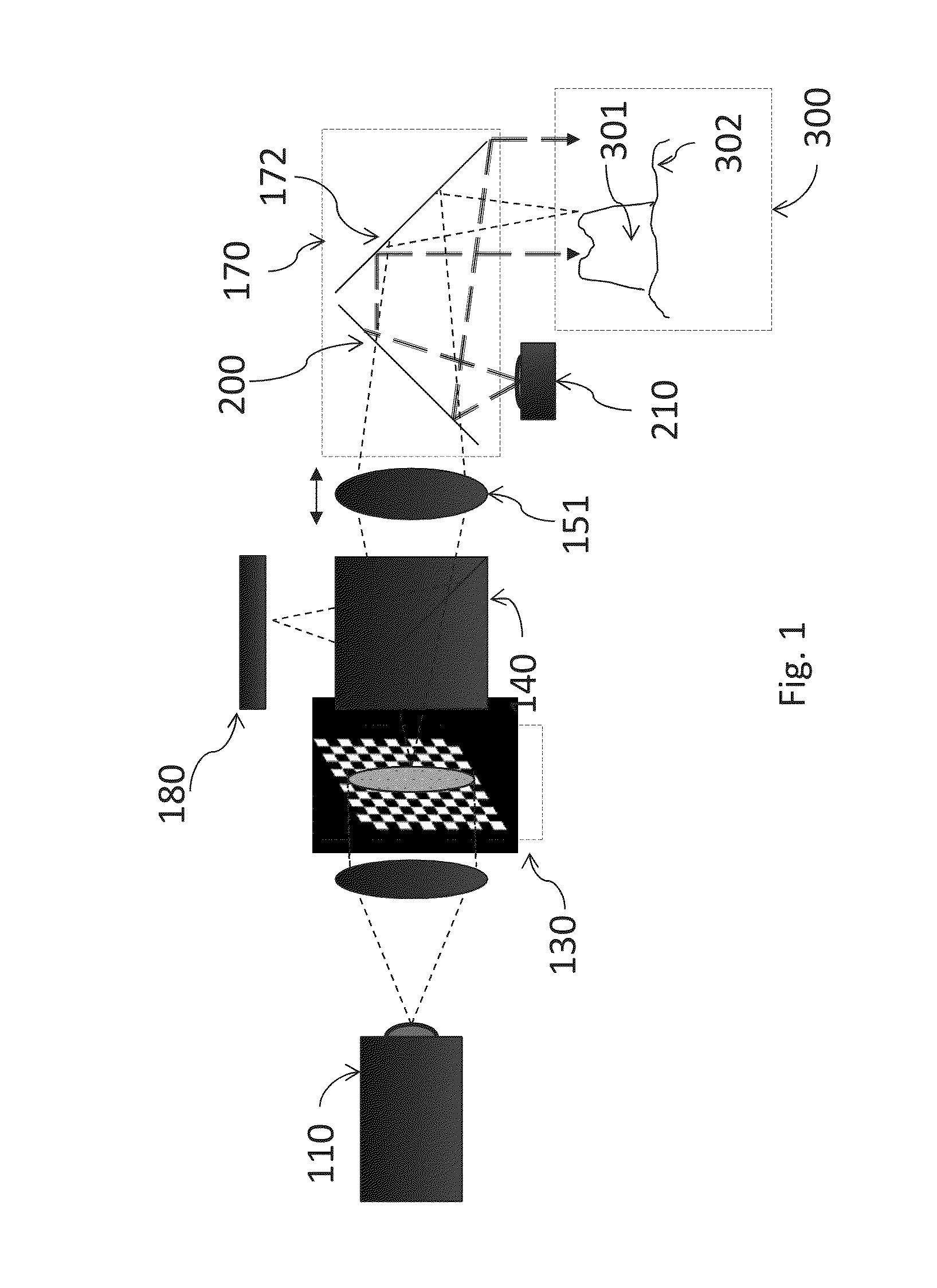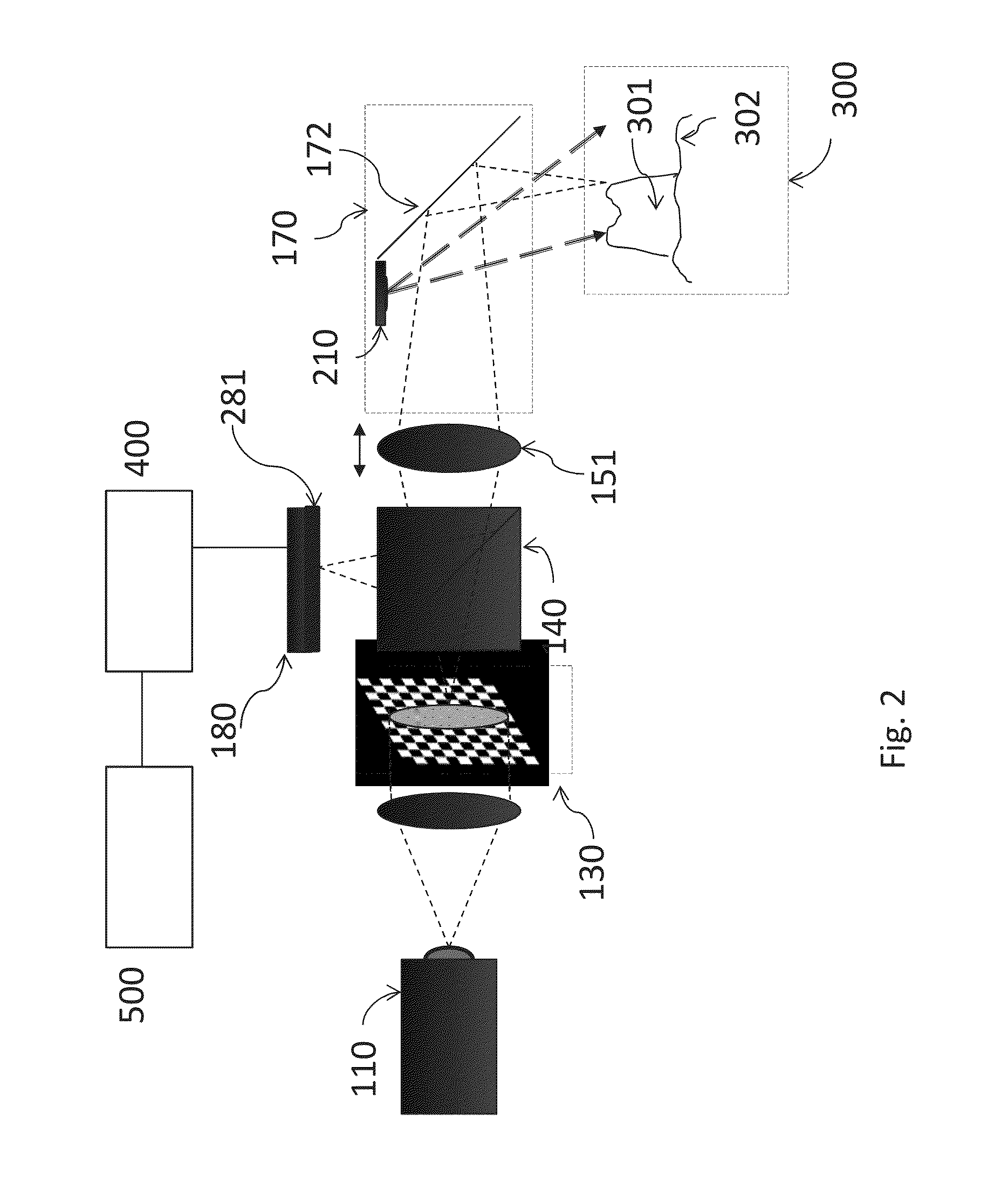3D intraoral scanner measuring fluorescence
a scanner and fluorescence technology, applied in the field of intraoral 3d scanning, can solve the problems of inability to accurately measure fluorescence recordings, inability to accurately detect the motion the intraoral cavity, and inability to accurately measure the fluorescence intensity of the 3d scanner. achieve the effect of improving accuracy and/or resolution
- Summary
- Abstract
- Description
- Claims
- Application Information
AI Technical Summary
Benefits of technology
Problems solved by technology
Method used
Image
Examples
Embodiment Construction
[0279]In the following description, reference is made to the accompanying figures, which show by way of illustration how the invention may be practiced.
[0280]The figures below illustrate schematically how embodiments of a 3D scanner according to this invention can be realized. The figures are not necessarily dimensionally precise.
[0281]FIG. 1 shows an embodiment of the invention, namely a focus scanning intraoral 3D scanner comprising an illumination unit with a first light source 210 and a second light source 110, a pattern 130 (a line in a true cross-sectional view, but shown here at an angle for clarity), an image sensor 180, a beam splitter 140, and focusing optics with a moveable lens 151. The 3D scanner has a tip or probe 170 with a mirror 172 that folds the beam path towards the region of the intraoral cavity being scanned 300. The intraoral cavity comprises hard dental tissue 301 and soft dental tissue 302. The second light source 110 emits light at least at the second wavel...
PUM
 Login to View More
Login to View More Abstract
Description
Claims
Application Information
 Login to View More
Login to View More - R&D
- Intellectual Property
- Life Sciences
- Materials
- Tech Scout
- Unparalleled Data Quality
- Higher Quality Content
- 60% Fewer Hallucinations
Browse by: Latest US Patents, China's latest patents, Technical Efficacy Thesaurus, Application Domain, Technology Topic, Popular Technical Reports.
© 2025 PatSnap. All rights reserved.Legal|Privacy policy|Modern Slavery Act Transparency Statement|Sitemap|About US| Contact US: help@patsnap.com



